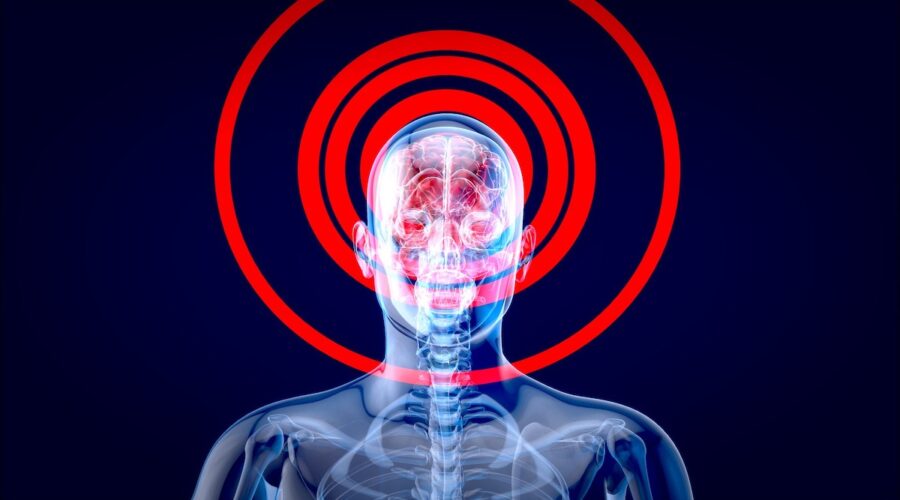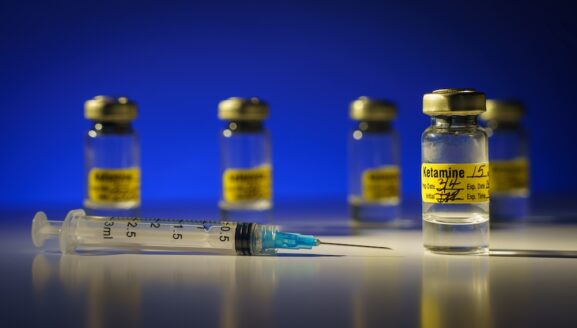Fisher Wallace Stimulator vs. TMS Therapy
For those looking for alternative therapy methods to help treat mental health issues, the Fisher Wallace Stimulator may be an option. As an FDA-approved device, can this therapy unleash effective results? What should users know before trying it? We explain in this article.
Brain stimulation is an uncommon type of mental health treatment, but, for many people, it can be highly effective. It may also provide benefits when more conventional treatments (psychiatric medication and psychotherapy) have not provided adequate relief.
When people think of using brain stimulation to treat depression, for instance, they might think of electroconvulsive therapy (ECT). While this form of treatment can be helpful (as a last resort when other options fail), it carries risks — due to the fact that ECT induces seizures and requires general anesthesia.
However, brain stimulation treatments have moved beyond ECT. Patients now have options like the Fisher Wallace Stimulator and transcranial magnetic stimulation (TMS), both of which have been FDA-approved for treating certain conditions.
If you’re considering an alternative treatment to psychiatric medication and psychotherapy, or an additional one, you may be wondering how these forms of brain stimulation compare. That’s what this post aims to clarify. So, to begin with, let’s summarize what these treatments involve.
RELATED: Magnetic Therapy For Depression Is Here To Stay
A Breakdown of Fisher Wallace Stimulator ands TMS Benefits and Side Effects
| Fisher Wallace Stimulator | Transcranial Magnetic Stimulation (TMS) | |
| Type of Therapy | Electrical stimulation | Magnetic stimulation |
| Mechanism | Delivers gentle electrical pulses to the brain, promoting relaxation | Uses magnetic fields to stimulate nerve cells in the brain |
| FDA Approval | Cleared for use in treating anxiety, depression, insomnia | Approved for depression treatment, other uses are off-label |
| Treatment Location | At home, user-administered | In a clinical setting, administered by healthcare professionals |
| Treatment Duration | Daily sessions of 20 minutes | Daily sessions of 20-60 minutes, usually for 4-6 weeks |
| Side Effects | Minimal: slight itching or tingling at the electrode sites | Common: Headaches, scalp discomfort at the treatment site Less common: Lightheadedness, discomfort from noise Rare: Seizures, mania (in people with bipolar disorder) |
| Contraindications | Few (need to remove earrings, necklace, etc.) | More (history of seizures, implants like pacemakers, stents etc.) |
| Portability | Portable device, can be used anywhere | Non-portable, must be administered at a clinic |
| Cost | Lower cost, one-time purchase | Higher cost, per session basis |
| Insurance Coverage | Less commonly covered by insurance | More commonly covered by insurance for treatment-resistant depression |
In terms of effectiveness, both have shown positive results in clinical studies for certain conditions. But their effectiveness can vary greatly depending on the individual and the specific condition being treated. It’s also important to note that TMS is generally used for more severe cases of depression that have not responded to other treatments. While the Fisher Wallace Stimulator may be used for a wider range of conditions.
RELATED: Mike Tyson Says Using Psychedelics While Training “Takes Me to Heaven”
What Is The Fisher Wallace Stimulator?
The Fisher Wallace Stimulator is an FDA-approved device that can be used to treat depression, anxiety, and insomnia. Since the brain is an electrical system, a team of physicians and electrical engineers developed the Fisher Wallace Stimulator to improve how the brain’s neurons perform. Its intent is to be a viable alternative (and adjunct) to psychiatric medication.
The device uses a gentle electrical current that targets the limbic system, which contains brain structures involved in processing emotions. It is also meant to stimulate the release of so-called “feel-good” neurotransmitters, including dopamine and serotonin, as well as lower cortisol levels, regulate the sympathetic nervous system, and induce a healthy brainwave state.
A user is in complete control of the treatment. You can use the device at home, which might take up only 20 minutes of your time per session. To use the Fisher Wallace Stimulator, you put on a headband, which contains two electrodes that deliver the low-intensity electrical current. You control these electrodes using a connected handheld device. The Fisher Wallace Stimulator is portable and battery-powered, so you can take it anywhere with you.
RELATED: The Alleged “Ketamine Queen” Says She Never Met Matthew Perry
Does The Fisher Wallace Stimulator Really Work?
There is some research establishing the efficacy of the Fisher Wallace Stimulator.
A 2015 study conducted at Mount Sinai Beth Israel Hospital and published in the Journal of Nervous and Mental Disease found that patients with bipolar II depression (BD II) who received treatment with the Fisher Wallace Stimulator experienced a significant reduction in their depression symptoms compared to patients using a placebo device. Researchers in the study state that no serious side effects or adverse events such as hypomania (a milder version of mania) were experienced by patients in the study.
Research from 1998 found that 20 minutes of cranial electrical stimulation (CES) with a cranial electrical stimulator (the same technology as the Fisher Wallace Stimulator) was able to significantly increase cerebrospinal fluid (CSF) and plasma levels of serotonin and beta-endorphin, as well as plasma levels of melatonin. This hypothalamic modulation may explain the reported antidepressant effect of CES.
In a separate 1998 study, results showed that the Fisher Wallace Stimulator was safe in the treatment of seven children with a diagnosis of cerebral palsy. Researchers reported no adverse responses.
A 1996 study published in Integrative Physiological and Behavioral Science demonstrated the LISS Cranial Stimulator (the name of the Fisher Wallace Stimulator prior to rebranding) was able to significantly increase levels of CSF serotonin and beta-endorphin. There were also elevations in the levels of plasma serotonin, beta-endorphin, GABA, and DHEA, together with lower levels of cortisol.
A 2009 report, presenting findings from a retrospective chart review, revealed that newly abstinent substance-dependent individuals who received CES exhibited better retention rates compared to clients who did not receive CES.
Does The Fisher Wallace Stimulator Work For Insomnia?
One of the main applications of the Fisher Wallace Stimulator is the treatment of insomnia, the worldwide prevalence of which is 10-30 percent of the population. The symptoms of this sleep condition include finding it hard to fall asleep, waking up several times during the night, and feeling tired during the day.
The consequences of insomnia are significant and include depression, physical health risks, impaired work performance, a higher risk of accidents, and overall poor quality of life.
As already stated, the FDA has cleared the Fisher Wallace Stimulator as a treatment for insomnia. Health Canada has also cleared the brain stimulation device for the treatment of insomnia and chronic pain.
According to Fisher Wallace Laboratories, the published research and clinical practice indicate that the device has a 75 percent success rate in reducing or eliminating multiple forms of insomnia and chronic pain. Charles Fisher, president of Fisher Wallace Laboratories, says that “for many insomnia and chronic pain sufferers, relief is just 20-minutes away.”
How Long Does The Fisher Wallace Stimulator Take To Work?
While Fisher has claimed above that people can experience benefits in as little as 20 minutes, Fisher Wallace Laboratories has stated that the device must be used at least five times, for 20 minutes at a time, before it can begin to produce beneficial effects.
So, if you’re using the Fisher Wallace Stimulator twice a day for 20 minutes, which is recommended, it may take 2-3 days to kick in.
How Much Does The Fisher Wallace Stimulator Cost?
The device retails for $499, but it may sometimes be on offer. This is a fraction of the annual cost of pharmaceutical drugs that treat the same symptoms.
Does Insurance Cover The Fisher Wallace Stimulator?
Many private insurance companies will reimburse patients for the purchase of a Fisher Wallace Stimulator if their doctor provides a letter of medical necessity. It is a prescription-only device.
If an insurance company denies the claim at first, it will often accept the claim once the patient contests the initial denial.
Medicaid in Maine (MaineCare) fully covers the purchase of the device. Medicare does not currently cover it.
RELATED: The Best TMS Therapy Clinics In New York City
What Is TMS Therapy?
TMS therapy is another form of brain stimulation. It relies on electromagnetic induction using an insulated coil placed over the scalp.
The coil generates brief magnetic pulses, which pass easily and painlessly through the skull and into the brain, targeting brain regions thought to play a role in mood regulation.
For instance, TMS used to treat depression focuses on the patient’s left dorsolateral prefrontal cortex (DLPFC). This brain region is underactive in depressed patients and it has deep connections to other areas heavily involved in mood regulation, including the insula, anterior cingulate, and amygdala.
The idea behind TMS is that the magnetic pulses will stimulate the nerve cells in these underactive regions, so that they return to a normal level of activity. Ultimately, this alleviates negative patterns of thoughts and feelings that may consume some people.
The pulses generated are the same type and strength as those created by magnetic resonance imaging (MRI) machines. When a clinician administers these pulses in rapid succession, the treatment is referred to as repetitive TMS or rTMS. This can produce longer-lasting changes in brain activity. There is also deep TMS treatment (dTMS), which targets larger regions, deeper within the brain.
RELATED: rTMS vs. dTMS Therapy – The Key Difference
Comparing The Fisher Wallace Stimulator To TMS
Both the Fisher Wallace Stimulator and TMS are non-invasive forms of brain stimulation that carry no risk of addiction or withdrawal symptoms. Both have FDA approval for treating major depression as well.
There can be some similarities in side effects, as well as some differences.
While Fisher Wallace Laboratories highlights research showing the treatment doesn’t result in side effects or adverse events, other research finds otherwise. The most frequently reported side effects include vertigo, skin irritation, and headaches. Data shows that adverse events have included disorientation, tinnitus, anxiety, depression, and fatigue.
The side effects of TMS tend to be minimal and may include minor headache (so it has this in common with the Fisher Wallace Stimulator), as well as lightheadedness and scalp discomfort during the procedure. When the procedure is over, these side effects will typically subside.
However, many people who have received TMS have reported more serious adverse events, including tinnitus, depression, and anxiety. Some people have also experienced memory problems and cognitive issues following treatment.
Here are the main differences between the two forms of treatment:
- The FDA has cleared the Fisher Wallace Stimulator as a treatment for insomnia and anxiety. But it has only approved TMS therapy for the treatment of major depression and pain associated with migraine headaches.
- The Fisher Wallace Stimulator (at a retail price of $499, sometimes at a discounted price) is much cheaper than TMS therapy (between $6,000 and $12,000 out of pocket).
- TMS often treats more conditions. These include post-traumatic stress disorder (PTSD), obsessive-compulsive disorder (OCD), autism, migraines, and Parkinson’s disease.
- TMS therapy requires that you may regular office visits. You can’t use TMS at home like you can with the Fisher Wallace Stimulator. The latter is, therefore, far more convenient.
- You can experience the beneficial effects of TMS therapy in two weeks. Whereas the Fisher Wallace Stimulator can provide benefits after only two days of use.
When looking at the Fisher Wallace Stimulator vs. TMS therapy, you should get a better sense of which treatment is the right choice for you. The former is clearly much more affordable. But if your insurance provider will cover TMS therapy, then the latter option could be worth trying out, too.
RELATED: fNIRS: What Is It, And What Does It Have To Do With Psychedelics?




Isabella
June 4, 2023 at 2:45 amI saw a display ad at the pain clinic I go to for the Fisher Wallace Stimulator and I thought it could work for chronic physical pain. Is this true? After being on pain medicine for years it’s gotten to where it doesn’t work as well as it should, and if the Fisher Wallace Stimulator could help that might be the route for me to go.
Lynn G Bodenstein
August 5, 2024 at 2:24 amI can only speak for myself. When I am better rested and in a better mood it seems like I am in less pain.
Research indicates the Fisher Wallace Stimulator both stimulates and relaxes. Go figure! Although I still have my brain injury if I perceive less pain, that counts. Having studied and practiced psychology, I believe that it can help heal the electrical system of the brain even if it doesn’t change the “physical structure” of the brain. Not feeling as much pain is my gain.